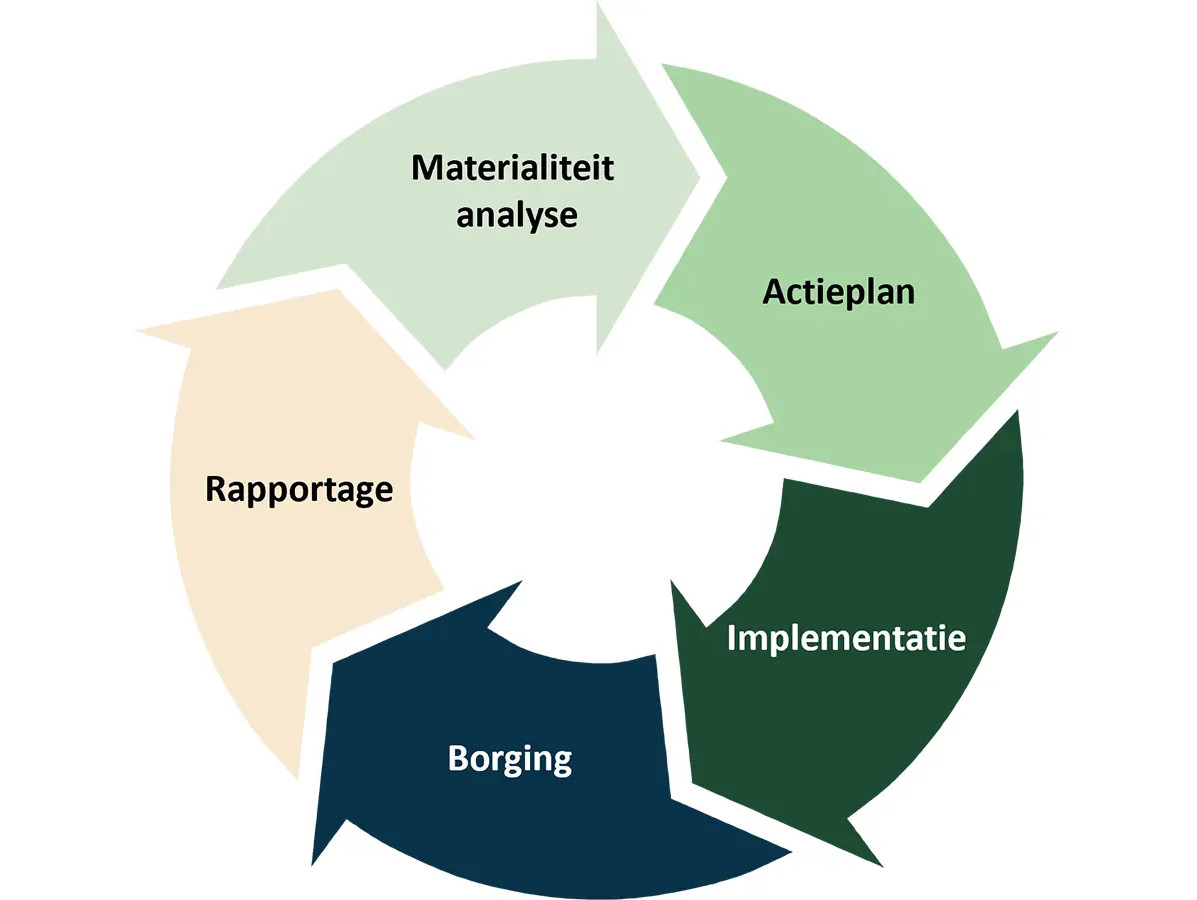
With the introduction of the Corporate Sustainability Reporting Directive (CSRD) in 2024, many companies face the challenge of including sustainability information in their annual reports. Here are the 5 phases you need to follow in preparing for reporting, along with 6 practical tips to implement them. Pragmatism is the key!
The CSRD is not a one-time exercise; it’s an ongoing process. You will need to report every year. The first year requires the most effort, as this is when you lay the groundwork. After that, it’s all about maintaining and expanding.
Before you begin, consider how you want to approach CSRD: as an obligation or a strategic opportunity? If you have to comply, why not integrate it into your commercial strategy? To prepare for the CSRD, you typically go through the following five phases:
1. Start with a double materiality assessment (DMA), where you identify which topics are important for your company. This is similar to a GIRA risk analysis. The outcome of the materiality assessment will form the table of contents for your CSRD report.
2. Once the DMA is complete, use the European Sustainability Reporting Standards (ESRS) to determine exactly what needs to be reported.
3. Assess the data you already have and set action points for the missing information.
4. Assign a single person responsible for each theme and create a project team to carry out the action points.
5. Implement, secure, and report. Try to integrate these responsibilities into existing structures, such as your HACCP team.

CSRD is new, but there is much to learn from observing what others are doing. Here are some tips from our experiences in the food industry:
CSRD comes with a lot of specific requirements, but your first report doesn’t need to be flawless. Focus on the most important themes and show that you are making progress in those areas. Prioritize and build on this in the following years. The CSRD must be workable for your organization. Review the reporting requirements you can postpone.
Start by forming a CSRD team. It’s important that this is a multidisciplinary team, as sustainability is a broad and challenging topic. Moreover, the information needed to compile a sustainability report comes from different departments. Compare this to the approach taken when implementing an HACCP plan: quality isn’t created by one person alone. It requires collaboration with both internal and external stakeholders. A multidisciplinary approach ensures a more complete and efficient process.
Every food company already has some form of quality system. Compared to other sectors, these management systems are well developed. This puts the food industry in a unique position within CSRD. Take advantage of this; build on already implemented systems and use them as the foundation for data collection, monitoring, and CSRD reporting. This way, you avoid duplicating work.
The CSRD requires collecting a lot of data and documents. It’s important that every step is traceable, so the process remains transparent and auditable for the accountant. A common pitfall is that companies try to do everything at once without maintaining a clear overview. Ensure you have a solid digital system in place and automate where possible. This prevents the need for manual data collection every year.
Without sufficient internal support, implementing changes is difficult. Management involvement and clear internal communication are essential for fostering a culture where CSRD compliance becomes second nature. You can build on existing practices here as well, such as the GFSI protocol for ensuring a food safety culture.
More than 50,000 companies need to comply with CSRD. Publicly listed companies will have to report on 2024 by early 2025. Look at the CSRD reports that are published and gain inspiration from other food companies. For example, check the annual reports of Yara or Cosun. You often face the same challenges as other food companies in preparing for CSRD, such as gathering data from your supply chains. Collaborate with your suppliers and competitors to solve these challenges and reduce costs. Industry associations and OSV network events are ideal opportunities to share experiences.
A good start is half the battle: begin small, take the first steps, and grow in the coming years. This way, CSRD can become a manageable and effective tool to future-proof your company.
Source: Vakblad Voedingsindustrie 2024